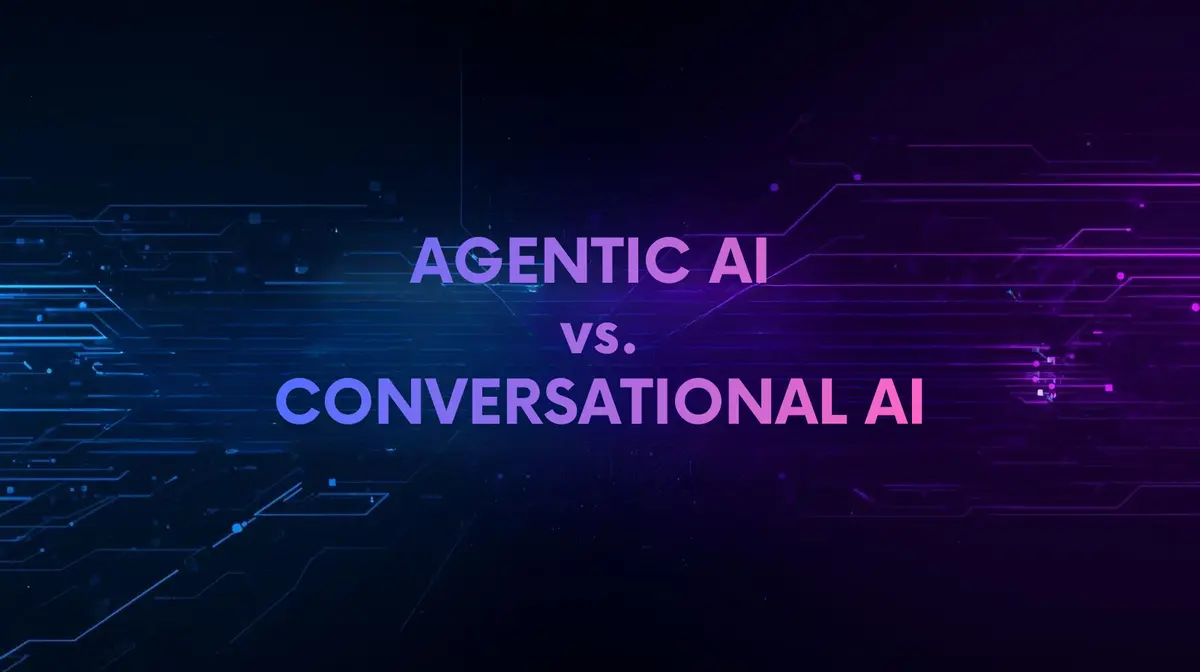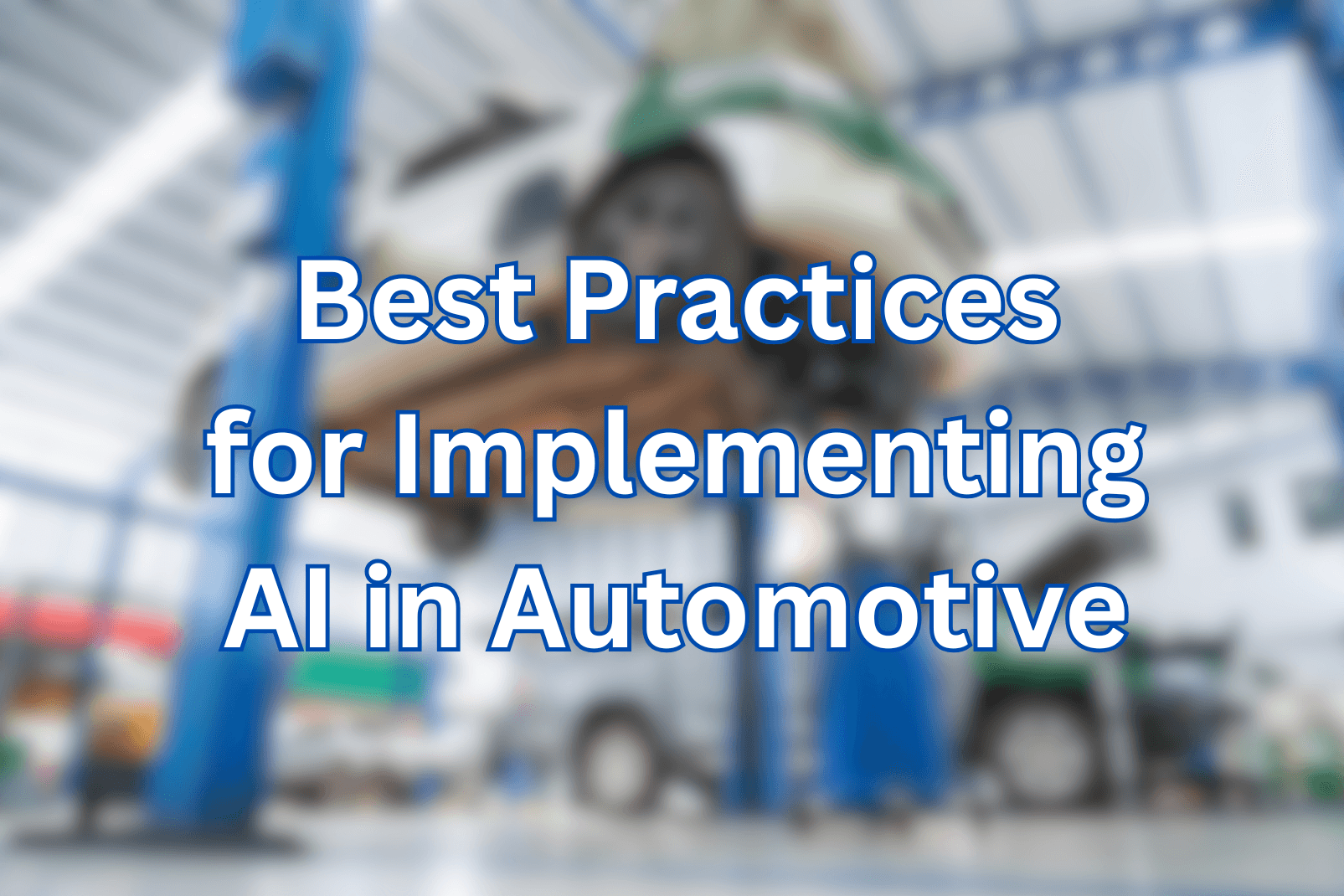

Reimagining Automotive Dealerships with Agentic AI: Smarter, Faster and More Profitable
If you run a modern dealership, your day is a symphony of moving parts, including inbound leads from a dozen channels, inventory that changes by the hour, parts and service backlogs, financing packages that require precision and the speed and responsiveness customers have come to expect in other industries. The margin for error is razor-thin, and yet the amount of manual coordination required has never felt heavier.
That’s exactly where artificial intelligence (AI) agents — not just chatbots, but autonomous and connected software teammates — are changing the game. Unlike traditional automation, agentic AI systems can perceive context, reason across systems, take actions (with guardrails) and learn from the outcomes instead of simply following scripts. Think of them as purpose-built digital coworkers for BDC, sales, finance and insurance (F&I), service and parts, each one orchestrated to eliminate delay, surface opportunities and keep your processes consistent 24/7.
Why the urgency now? Because the operating environment in the automotive industry has shifted under our feet:
- Fixed ops is massive and growing in complexity. Franchised dealers in the United States wrote more than 270 million repair orders with $156 billion in service and parts sales in 2024, a scale that demands intelligent scheduling, upsell and communications at every turn.
- Most shopping starts online, and journeys are omnichannel. More than 95% of used-car searches now begin online. Large retailers report that more than half of sales are influenced by a blend of online and in-store interactions, pressuring dealers to respond instantly and consistently across channels.
- Dealer productivity has stalled. Despite tech investments, U.S. auto retailers still average 14 to 16 vehicles sold per employee per year, unlocking the next wave of productivity requires new operating models, not just new tools. AI agents can enhance productivity by automating time-consuming tasks and streamlining operations in complex environments, allowing staff to focus on higher-value activities.
Dealerships that win will be the ones that turn “we have software” into “we have software that actually does the work.” That’s the promise of AI agents automotive industry leaders are adopting now.
What Agentic AI Really Does in a Dealership
Agentic AI means autonomous, guardrailed systems that sense, decide and act. An agentic AI system is designed to execute tasks autonomously with minimal human oversight, making decisions and carrying out actions to achieve specific goals.
These systems plug into your customer relationship management (CRM), dealer management system (DMS), telephony, marketing, desking, service scheduler and pricing tools. Integrating agentic AI into dealership workflows streamlines operations, automates complex processes and improves overall efficiency. Here’s how they transform each department:
1. Business Development and Lead Management
Problem: Leads come in at all hours, and response speed and relevance determine conversion.
Agentic shift: An AI lead agent qualifies in seconds, personalizes replies from prior browsing behavior, proposes test-drive times that align with staff calendars and nudges the shopper via their preferred channel until a slot is confirmed, efficiently answering inquiries and managing customer inquiries as they arise. When escalation to a human is needed, human agents collaborate with the AI to handle complex customer queries and provide personalized support.
2. Pricing, Merchandising and Inventory Turn
Problem: Markets move constantly, and stale merchandise and mispriced units erode (per vehicle retail (PVR) and days-to-turn.
Agentic shift: An inventory agent watches local comps, demand velocity and aging risk, then proposes (or automatically applies) micro-price adjustments, changes listing order, refreshes photos/captions and flags trades that need reconnaissance prioritization. The agent can analyze data and process vast amounts of information using advanced AI models to enable data-driven decision-making in pricing and inventory management.
3. Service Drive Optimization
Problem: Phones ring off the hook, and advisors juggle RO creation, upsells, parts ETAs and status updates.
Agentic shift: A service agent books appointments 24/7, pre-writes ROs from symptom descriptions, checks recall/maintenance eligibility, chases approvals with clear estimates and sends proactive updates tied to technician progress. The agent automates routine tasks and repetitive tasks such as scheduling and managing service appointments, thereby automating tasks that improve efficiency in the service department. Even a small uplift per RO compounds dramatically across a year.

4. F&I and Contracting
Problem: Bottlenecks from handoffs, data re-entry and back-and-forth on terms.
Agentic shift: An F&I agent pulls lender programs, pre-checks eligibility, assembles compliant menus and surfaces protection products that match the buyer’s profile, accelerating contracts and reducing pen time. The agent manages complex workflows and multiple tasks involved in F&I operations, often interacting with external systems through application programming interfaces to streamline complex operations. Across retail, generative AI at scale is linked to 1.2 to 1.9 percentage-point margin improvement, evidence that intelligent automation can shift both top- and bottom-line results when deployed end-to-end.
5. Customer Care and Post-Sale Retention
Problem: Missed callbacks, uneven messaging and slow response bleed CSI and loyalty.
Agentic shift: A care agent monitors all channels, resolves common issues and escalates gracefully. Acting as a virtual assistant, the care agent can respond to customer requests using voice commands, provide information about vehicle features and analyze customer behavior to improve post-sale support. Studies show access to AI assistance increases the productivity of agents by 15%, with even larger effects for lower-skill and novice agents — exactly the population staffing many business development center (BDC)/call-center roles.
Why “Agents” Beat “Apps”
Most dealerships already have point solutions, such as chat, schedulers and CRM automations. Nevertheless, apps still rely on a human to knit everything together.
Agents do the stitching for you. They observe context, such as the lead source or trade-in estimate; reason about intent or availability; act by sending quotes, updating CRMs or holding F&I menus; and learn from outcomes. Integrating agentic AI into dealership workflows enables agents to autonomously interact with external tools, such as web search, APIs or databases, to gather real-time information and execute actions beyond the capabilities of traditional apps.
Agentic AI is software that moves from reactive automation to proactive, goal-seeking collaboration. Analysts expect half of gen-AI-using enterprises to deploy agentic systems soon because true value comes when AI closes loops, not just drafts content.
The Payoff Dealers Can Expect
The advantages of agentic AI aren’t limited to isolated productivity gains. They represent a wholesale shift in how work gets done.
When dealerships introduce autonomous agents into daily operations, the effects, including faster lead handling, cleaner data handoffs, consistent follow-through and more satisfied customers, ripple across departments. Each agent acts as a force multiplier, reducing busywork and ensuring the dealership’s processes hum along with precision and speed. Major advantages of agentic AI include improvements in supply chain management, supply chain optimization and quality control across dealership operations.
Here’s where dealerships are seeing the biggest wins:
More first-touch conversions
Sub-five-minute responses become the norm, not the exception, preserving the crucial conversion window where results are 10 to 21 times stronger.
Higher sales productivity
When assistants prep quotes, book demos and nurture leads, your team focuses on judgment-based selling. That long-stagnant industry average of 14 to 16 vehicles per employee finally starts to move.
Faster, cleaner ops in fixed
Round-the-clock service booking, automated updates and AI-checked inspections smooth workloads and boost approved work in a $156 billion fixed-ops segment.
Omnichannel consistency
With 40%-43% of dealers enabling online buying, agents ensure seamless continuity between digital and in-store experiences.
What “Good” Looks Like: A Day with Dealership AI Agents
Imagine what daily operations feel like when every system communicates and nothing slips through the cracks. In addition to making isolated tasks faster, agentic AI re-shapes the rhythm of the dealership itself. These agents can process vast amounts of information and handle multiple tasks simultaneously, ensuring nothing slips through the cracks. The sales floor becomes calmer, the service lane more predictable and the customer experience more cohesive.
Your technology finally works for your team instead of the other way around. Each interaction flows seamlessly into your CRM, keeping staff informed and customers delighted.
- 7:55 a.m. The lead agent has already replied to overnight inquiries, booked two test drives and rescheduled a no-show.
- 10:10 a.m. The pricing agent detects hybrid demand spikes locally and adjusts three listings for maximum exposure.
- 12:30 p.m. The F&I agent pre-packages lender options for an upcoming delivery and sends a compliant digital menu.
- 2:05 p.m. The service agent messages a customer with an ETA update and a brief technician video, prompting instant approval.
- 4:40 p.m. The care agent spots a new Google review, drafts a professional response and schedules a callback for resolution.
Agentic AI Systems: Guardrails That Matter
As dealerships adopt agentic AI, clear boundaries become essential. Autonomy only works when paired with accountability, ensuring AI acts as an extension of your team, not a replacement for it.
The most effective systems define exactly what agents can handle and when human intervention is required. For example, an AI assistant might manage basic lead interactions or appointment scheduling but route complex financing or goodwill cases to staff for review.
Compliance and data privacy must also be built in from the start. Before implementing agentic AI systems, dealerships should carefully evaluate the costs, benefits and readiness to ensure that enterprise data is managed securely and ethically.
Every customer interaction, especially those involving F&I or personal data, needs to reflect the dealership’s ethical and regulatory standards. That’s why human oversight remains crucial. Even the best AI systems should defer to people for nuanced or high-stakes decisions.
Continuous learning completes the loop. When agents receive feedback tied to performance metrics like show rates, RO approvals or CSI scores, they adapt to each dealership’s unique way of operating. Studies consistently show that this kind of human-AI collaboration improves both productivity and employee satisfaction, especially among newer team members.
Guardrails aren’t constraints. They’re what make agentic AI effective, responsible and aligned with dealership values.

Best Practices for Implementing AI
To maximize the benefits of agentic AI in the automotive industry, companies should adopt a strategic and measured approach to implementation. Start by identifying specific use cases where AI can deliver immediate value, such as automating lead responses or optimizing service scheduling, and focus on perfecting these workflows before expanding further. Continuous monitoring and evaluation of AI system performance are essential to ensure that operational efficiency and customer experiences are consistently improving.
Investing in talent and training is another critical best practice, equipping employees with the skills needed to collaborate effectively with AI systems. Transparency, explainability and fairness should be prioritized in all AI-driven decision-making processes to maintain trust with customers and stakeholders.
By following these best practices, dealerships can unlock the full potential of agentic AI, driving down costs, improving operational efficiency and delivering superior customer experiences. Ultimately, implementing agentic AI positions automotive businesses to gain a lasting competitive advantage in an increasingly digital marketplace.
Getting Started: A Practical Rollout Sequence
Transitioning from static automation to agentic AI doesn’t require a complete system overhaul; it requires focus and iteration. The key is to start small, measure precisely and expand confidently once the value is proven. Begin by identifying one bottleneck that frustrates customers or staff, then deploy an AI agent to fully own that workflow from start to finish.
To make implementation structured and effective, follow this proven rollout sequence:
- Pick a high-leverage workflow such as lead response or service scheduling and perfect it end-to-end.
- Connect your data sources, such as CRM, DMS, phone and calendar, to give the agent full context.
- Establish measurable service level agreements (SLAs) (i.e., respond within 30 seconds, confirm within five minutes) and hold the agent accountable).
- Track real outcomes like close rates and CSI, not just activity counts.
- Expand horizontally once success is proven, allowing agents to share context and orchestrate together.
Dealers who adopt this disciplined rollout quickly realize compounding gains, such as smoother handoffs, shorter cycle times and a noticeable lift in both team morale and customer satisfaction.
The Future of Automotive AI
The future of automotive AI is bright, with rapid advancements in generative AI, autonomous systems and intelligent orchestration poised to reshape the industry. As AI technology matures, the adoption of AI agents and agentic artificial intelligence systems will become even more widespread, empowering dealerships to optimize supply chains, streamline manufacturing processes and elevate customer interactions to new heights. These intelligent systems will be capable of analyzing vast amounts of data, performing complex tasks and making autonomous decisions that drive business growth and innovation.
Emerging AI capabilities, such as predictive maintenance and advanced inventory management, will further enhance operational efficiency and customer satisfaction, giving dealerships a significant competitive edge. As the automotive industry continues to evolve, companies that embrace AI agents and agentic artificial intelligence systems will be better equipped to meet rising customer expectations, reduce costs and stay ahead of market trends. By leveraging the full potential of AI, the automotive sector is set to enter a new era of efficiency, profitability and customer-centricity.
The Bottom Line
The future of dealership operations belongs to teams where people do the human things, and AI agents do the rest. With online research dominating, omnichannel journeys normalizing and fixed-ops volume surging, the only sustainable way to hit today’s expectations is to let agentic AI shoulder the repetitive, time-critical work and keep your process consistent across every channel.
Revmo AI is built for exactly this moment. As the leader in Agentic AI for automotive, Revmo deploys specialized agents for BDC, sales, F&I, service and parts that plug into your existing stack, enforce your SLAs and learn from every interaction. The result is faster responses, cleaner handoffs, happier customers and more profitable rooftops.
If you’re ready to see what true agentic execution looks like in a dealership, Revmo AI is where you start. Schedule a demo today to get started!

Written By Devon Macdonald
SVP of Sales
Specializing in go-to-market strategies, Devon boasts extensive experience as a revenue and growth leader, GTM advisor and sales coach.
See Recent Posts


Future-Proofing Your Restaurant: How Predictive AI and Toast Unleash Next-Gen Operational Efficiency and Guest Loyalty

Turning Reviews into Revenue: How AI Agents Analyze Restaurant Feedback
